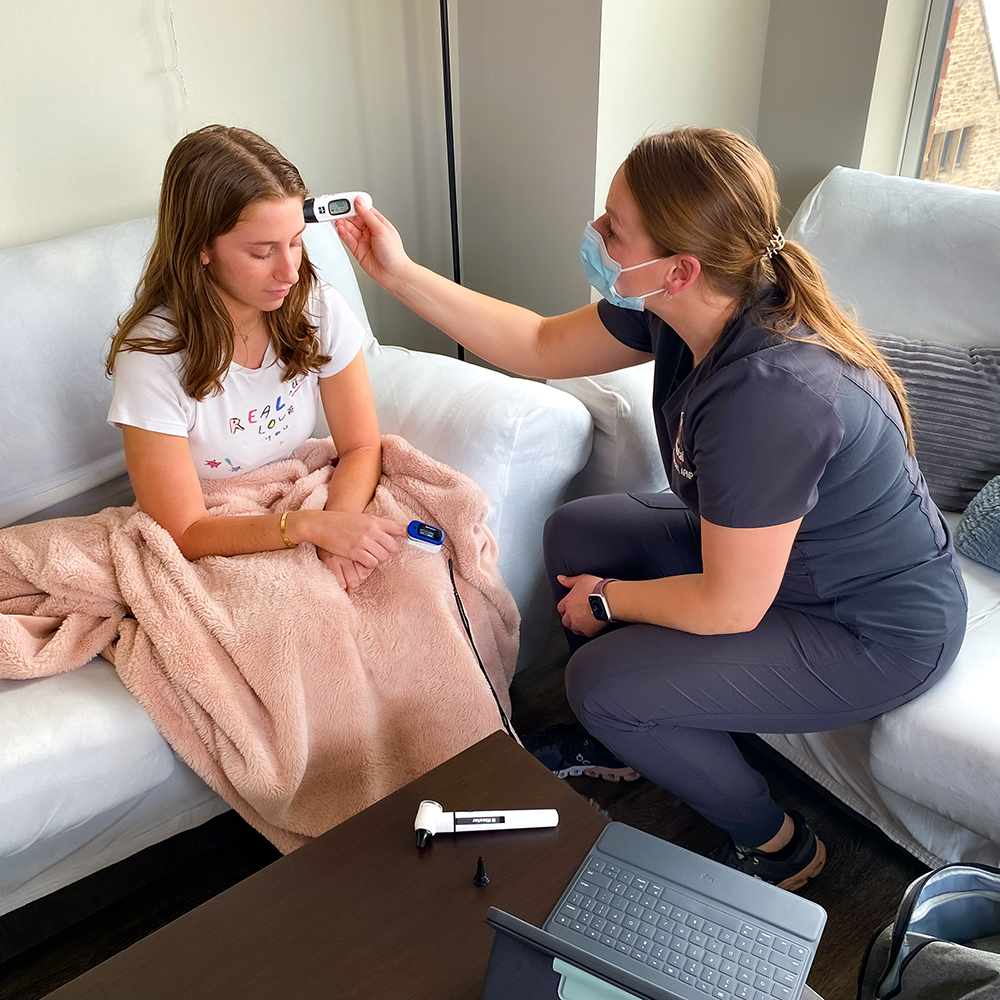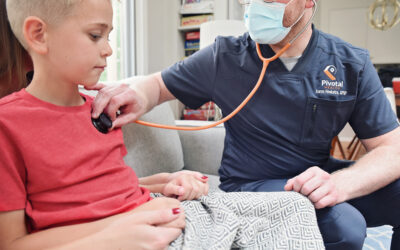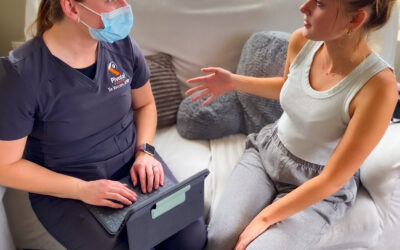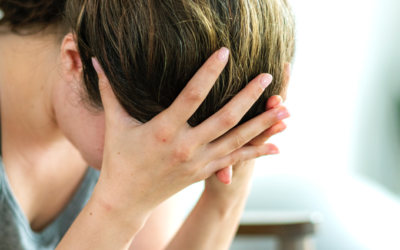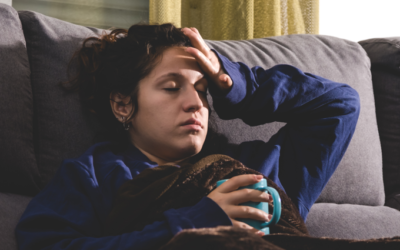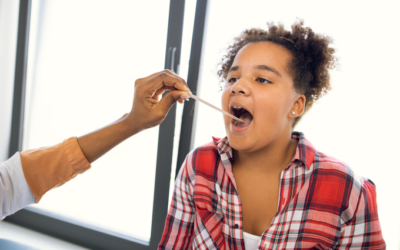What College Students Should Know About Mono
Feeling exhausted, dealing with a sore throat that won’t go away, and fighting a fever that keeps coming back? While these symptoms might seem like mononucleosis (mono), it’s important to understand that several different illnesses can cause “mono-like” symptoms, including influenza, strep, and other viruses.
At Pivotal Health, we frequently get questions about mono from college students and their families. This guide addresses the most common questions about mono in college, including how to recognize symptoms of mono, similar illnesses, when to seek medical care, and how to manage recovery.
How common is mono in college and why do college students get mono?
The American College Health Association’s Clinical Medicine guide shows that about 1-3% of college students get mono each year, with most cases occurring during their first and second years. The peak age for mono is between 15-24 years old, according to the Centers for Disease Control.
Several factors contribute to more college students getting mono, including:
- Close living quarters in dorms and apartments
- Shared bathrooms and common spaces
- Late nights and irregular sleep schedules that can weaken immune systems
- Stress from academic and social pressures
- Common habits like sharing drinks, eating utensils, or food
- Close contact during social activities
The Epstein-Barr virus (EBV), which causes most cases of mono, spreads primarily through saliva. In college settings, this can happen through:
- Drinking from the same container
- Sharing eating utensils
- Kissing
- Close contact sports
- Exposure to coughs or sneezes in shared spaces
While anyone can get mono, understanding the unique risk factors helps explain why mono is common in college.
What are common symptoms of mono in college students?
When mono develops, symptoms often appear gradually over two to four weeks rather than hitting all at once. Early symptoms can feel like a standard cold or flu, which is why many students don’t realize they have mono right away.
Early mono symptoms:
- Increasing fatigue that doesn’t improve with rest
- Mild sore throat that gets worse
- Headaches
- Low-grade fever
- General feeling of being unwell
Common peak mono symptoms:
- Extreme fatigue that makes it hard to attend classes or study
- Severe sore throat with swollen tonsils
- Fever ranging from 101-104°F
- Swollen lymph nodes in neck and armpits
- Body aches
- Loss of appetite
- Difficulty swallowing
Other possible mono symptoms:
- Enlarged spleen (requires medical monitoring)
- Mild liver inflammation
- Rash (in some cases)
- Night sweats
- Persistent headaches
Not everyone experiences all these symptoms, and how severe they are also varies. Some college students have mild cases that seem like a cold, while others may have severe symptoms that last several weeks.
How is mono diagnosed in college students?
To diagnose mono, a skilled Pivotal Health provider will examine the college student first and determine the appropriate approach according to established medical guidelines. While symptoms can suggest mono, other illnesses like strep throat, flu, upper respiratory viruses, or COVID-19 can cause the same symptoms.
According to the Cleveland Clinic and Mayo Clinic, monospot tests can be falsely negative if they’re performed too early. The National Institutes of Health states that monospot tests produce false negative results and “peak heterophile antibody levels are seen between 2 to 6 weeks from infection.”
Testing for mono:
- Mono tests are often not effective until you’ve had symptoms for at least 10 days
- Pivotal Health’s mono test is done with a peripheral blood draw (from the fingertip or a vein)
- Testing too early leads to false negative results
- Your Pivotal Health provider will determine the best timing for testing based on your individual situation and symptom progression
- In some cases, your provider will recommend monitoring symptoms rather than immediate testing
- If your symptoms resolve before 10 days, your Pivotal Health provider might not test for mono
Diagnostic approach for mono includes:
- Complete physical exam focusing on throat, lymph nodes, and abdomen
- Thorough discussion of general health, health history, current symptoms, and recent exposures
- Medical evaluation for other possible causes of symptoms, including possible other tests for strep, influenza, or COVID-19
- Appropriate testing, including monospot test when medically indicated, at your Pivotal Health provider’s discretion
How is mono treated in college students?
Mono is caused by a virus, which means antibiotics won’t help. The most essential — and often most challenging — part of treatment for mono is rest. Many college students feel pressured to continue normal activities, but this usually backfires, leading to a longer recovery and potentially serious complications.
Rest is absolutely crucial because your body needs significant energy to fight the virus that causes mono. When college students push themselves too hard or party too hard, symptoms often worsen and lead to relapses. While recovery typically takes 2-4 weeks with proper rest, students who don’t rest often experience symptoms for several more weeks or longer. Activities like heavy exercise, going out, partying, or drinking alcohol delay recovery and can lead to serious complications.
If you have mono, your Pivotal Health provider will create a personalized treatment plan that may include:
- Guidelines for rest and activity levels
- Recommendations for managing fever and pain
- Hydration requirements
- Safe ways to manage sore throat
- Clear instructions about avoiding alcohol
- Guidelines for returning to various activities, like sports
Important mono recovery rules:
- Stay home and rest, especially during the first 1-2 weeks
- NO alcohol — it can cause serious liver complications
- NO contact sports or heavy exercise — it can rupture your spleen
- Sleep as much as your body needs
- Drink plenty of fluids
- Take medication as directed for fever and pain
- Follow your provider’s instructions exactly
Please visit an emergency room if you experience:
- Severe abdominal pain
- Difficulty breathing
- Extreme weakness
Call or text your Pivotal Health provider if your symptoms get worse instead of better, or aren’t improving after following the prescribed treatment plan, or if you have questions about returning to activities.
Recovery time can vary. College students who ignore rest requirements and continue socializing, drinking, or pushing themselves too hard typically experience much longer recovery times and may develop complications that require additional, intensive medical care.
How can college students prevent mono and know when to seek care?
Preventing mono in college means avoiding sharing drinks, utensils, or personal items; prioritizing good sleep habits; and maintaining good hand hygiene. While these prevention steps can help, mono is common in college and it isn’t always preventable.
If you develop symptoms like severe fatigue, persistent sore throat, fever, or swollen lymph nodes, especially if they last more than a few days, contact Pivotal Health. Our providers will drive to you to evaluate your symptoms and determine the best approach for treatment.
